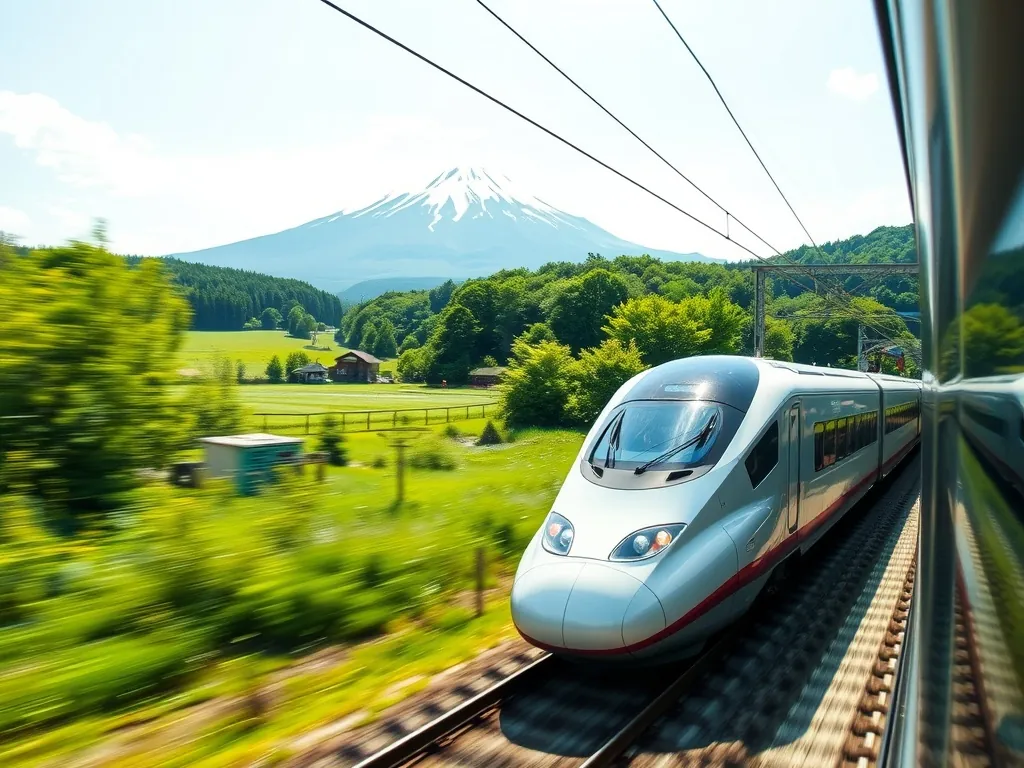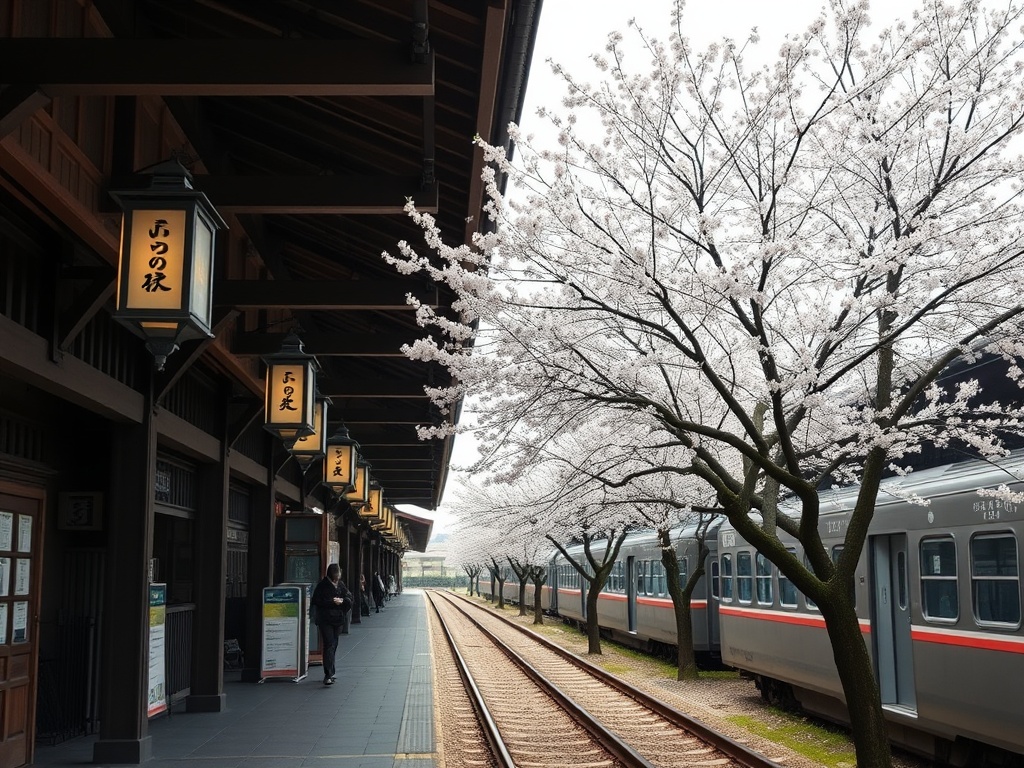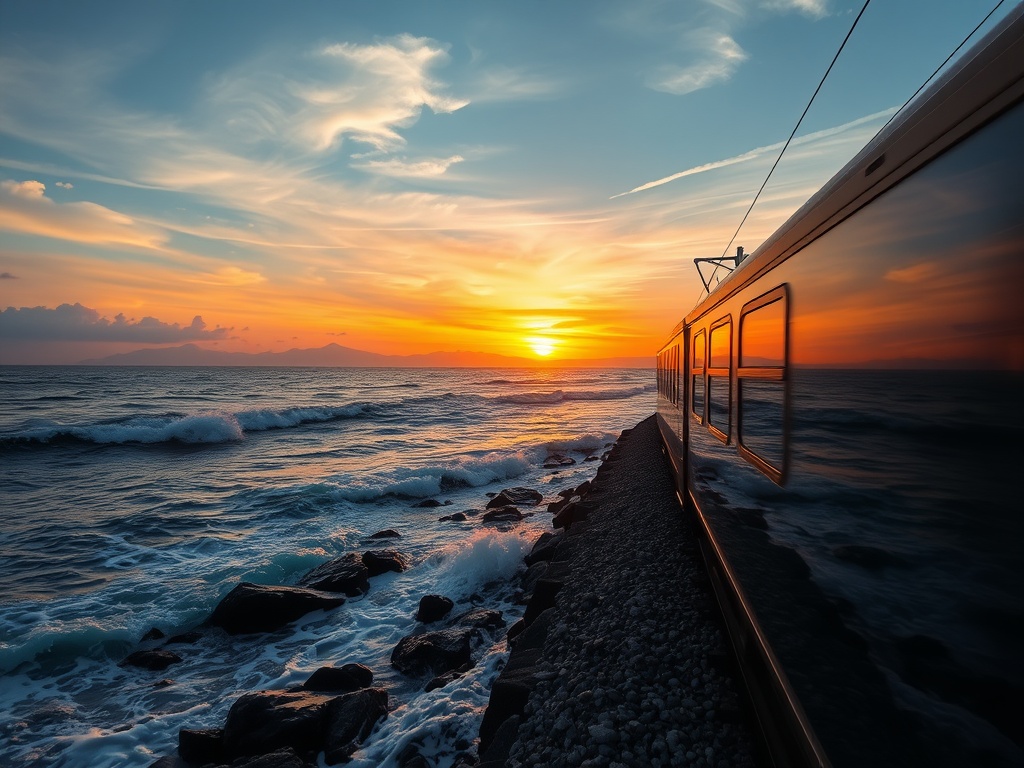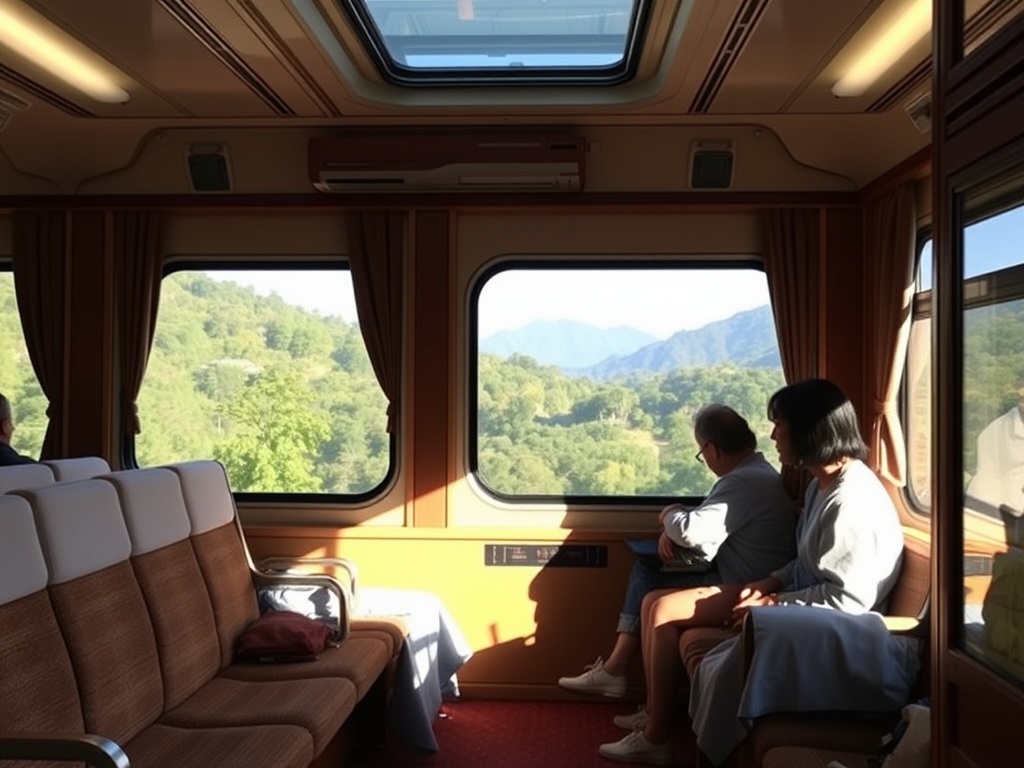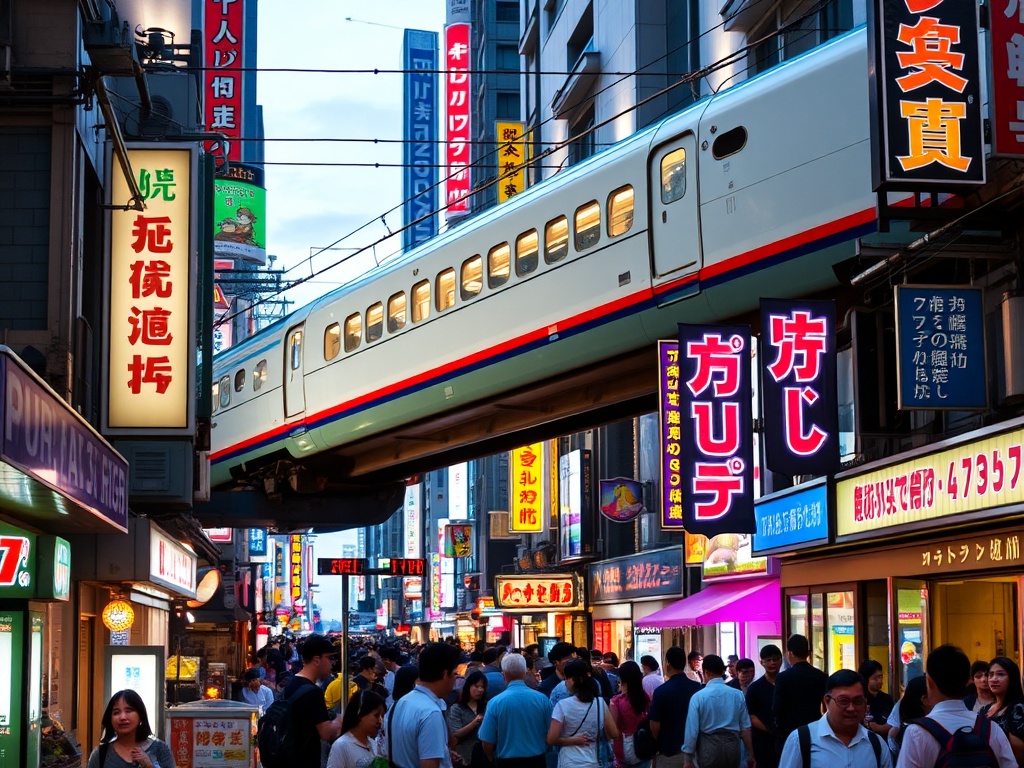Exploring Japan Beyond Tokyo: A Guide to Train Travel
Win a Free Trip to Japan!
Experience cherry blossoms and ancient temples
If you’re embarking on your first journey to Japan, you might feel that Tokyo alone offers a complete experience of the country. However, I firmly believe that one of the most thrilling aspects of visiting Japan is the myriad of destinations that lie beyond its bustling capital. For those adventurous souls eager to explore outside Tokyo, Japan’s rail network is a true marvel. With one of the world’s most comprehensive and efficient train systems, traveling from city to city is both straightforward and enjoyable. The iconic Shinkansen, or Bullet Train, with its distinctive aerodynamic design, stands as a testament to this efficiency.
In this post, I will cover the following topics:
- Traveling by Train in Japan
- Types of Trains in Japan
- What to do with your luggage when taking the train
- Understanding the JR Pass
- Overview of the JR Pass
- What is the JR Pass?
- Should I purchase a JR Pass?
- Types of JR Pass
- How to buy the JR Pass
- Utilizing the JR Pass
- Which Shinkansen trains are accessible with the JR Pass?
- Can I use the JR Pass on local trains?
- How to effectively use the JR Pass
- All About Shinkansen
- How to purchase Shinkansen tickets
- How to find Shinkansen schedules, fares, and train types
- Traveling on Shinkansen
- Tips for traveling in non-reserved seats on the Shinkansen
- Ekiben: A culinary delight when riding the Shinkansen
- Spotting Mount Fuji from the Shinkansen
Types of Trains in Japan
Japan boasts an extensive array of train types, each designed to cater to different travel needs. To help you choose the best option for your journey, let’s delve into the various types of trains and what each has to offer. Below, I’ve organized the different train types based on speed, from fastest to slowest:
| Train Type | Description | Examples |
|---|---|---|
| Shinkansen | Renowned worldwide for their speed, efficiency, and comfort, Shinkansen trains are the fastest in Japan, reaching speeds of up to 320 km/h (200 mph). They connect major cities in just a few hours. | Traveling from Tokyo to Osaka |
| Limited Express | Limited Express trains operate between cities and regions, making fewer stops than local trains but more than the Shinkansen. They are commonly used for medium-distance travel. | Narita Express, connecting Narita Airport and Tokyo, or Haruka train from Kansai International Airport to Osaka |
| Express | Express trains stop more frequently than Limited Express trains but are still faster than local trains, often used for mid-range routes or to connect smaller cities. | Kintetsu Railway express trains connecting Osaka, Kyoto, Nara, and Nagoya |
| Rapid/Special Rapid | Rapid and Special Rapid trains are quicker versions of local trains, skipping certain smaller stations to reach destinations more swiftly. Special Rapid trains, particularly in the Kansai region, make fewer stops than regular Rapid trains. | JR Special Rapid Service between Osaka and Kyoto |
| Local | Local trains cater to daily commuters, stopping at every station along a route and offering the most economical way to travel short distances within cities or between neighboring towns. | The JR Yamanote Line in Tokyo, which loops around the city and stops at key neighborhoods like Shibuya, Shinjuku, and Ikebukuro. |
What to Do with Your Luggage When Taking the Train
If you’re planning to travel around Japan and are carrying a lot of luggage, it’s essential to prepare in advance before boarding the train. If you have a small or medium-sized suitcase, you can conveniently store it in the overhead compartments. However, if you’re traveling with larger suitcases, keep reading!
Luggage Storage on Japanese Trains
Space for large suitcases on trains can be limited. On certain trains, like the airport express, there are dedicated luggage storage areas, but these are available on a first-come, first-served basis. The last row of each train car usually has space for 2-3 large suitcases, but only passengers seated in that row may place their luggage there. Therefore, it is advisable to reserve a seat in advance.
Takuhaibin: Sending Your Luggage Ahead
Japan excels in logistics. When traveling domestically on the Shinkansen or simply moving from one hotel to another, many locals choose to send their luggage ahead to their next accommodation. This allows for a more relaxed travel experience without the burden of carrying heavy bags. This service is known as Takuhaibin and is available throughout Japan. You can even send your luggage ahead to the airport before your flight!
Here are a few luggage delivery services available in different areas:
- Luggage delivery for Osaka and Kyoto area
- Luggage delivery for Tokyo area
- Luggage delivery for Okinawa area
- Luggage delivery for Sapporo area
All About the JR Pass
For many years, the JR Pass has been regarded as an essential purchase for anyone visiting Japan. It was once the most economical way to travel on the famous Shinkansen—Japan’s ultra-fast bullet train. This was possible due to heavy government subsidies aimed at making Japan more appealing to international tourists. However, as the saying goes, all good things must come to an end. Starting from October 1, 2023, these subsidies have been discontinued, leading to a price increase of 50-70% for the JR Pass.
With the new pricing structure, it has become challenging to justify the Unlimited JR Pass, prompting many to ask: Do I really need a JR Pass for my upcoming trip to Japan? I will endeavor to answer this question while sharing insights into the JR Pass and traveling on the Shinkansen.
What is the JR Pass?
Before we proceed, let’s clarify what the JR Pass is. JR stands for Japan Railways Group, which is one of the numerous train operators in Japan and the largest train company in the country. Japan Railways is particularly famous for operating the Shinkansen, the renowned bullet train that can reach speeds of 300 to 320 km/h. Besides the Shinkansen, Japan Railways also runs several other types of trains, including local and express trains.
The JR Pass is a special rail pass provided by Japan Railways Group that grants unlimited access to JR trains for long-distance travel via Shinkansen, either throughout the entire country (Unlimited JR Pass) or within specific regions (Regional JR Pass). It is important to note that while the JR Pass can take you to most major cities in Japan, it is only valid for JR trains and not for other train lines.
Should I Purchase a JR Pass?
The necessity of acquiring a JR Pass largely depends on your travel plans in Japan. The JR Pass is most advantageous for long-distance journeys between cities. Therefore, purchasing a JR Pass generally makes sense only if you plan to visit multiple cities in Japan.
For instance, if your itinerary includes Tokyo and other cities like Osaka, Kyoto, and Hiroshima, you might find that train fares between these cities can add up quickly. In such cases, the JR Pass could potentially save you money.
IC Card: If your travel plans involve staying within a single city, using an IC card for local train travel may suffice. Be sure to read about IC cards and how they can be used not just for train rides but also for various payments throughout Japan!
Determining whether to get a JR Pass requires some planning and calculations. You need to consider if there is a JR route between the cities you wish to visit, how much individual train tickets cost, and then compare this total to the price of the JR Pass. When planning my trips, I often create an Excel sheet with my itinerary for easy comparisons. You can check individual train fares via platforms like Klook or Google Maps, which I’ll elaborate on in a later section of this post. Additionally, it’s essential not to limit your options to just the JR Pass; other rail passes tailored to specific destinations, such as the Kintetsu Rail Pass in Kansai or the Kansai Railway Pass, may also be worth considering.
Types of JR Pass
There are two main types of JR Pass available: Unlimited Whole Japan JR Pass and Regional JR Pass.
1. Unlimited JR Pass
As the name suggests, the Unlimited JR Pass allows for unlimited rides on all JR trains across the country for a duration of 7, 14, or 21 days. This pass was a must-have for many travelers to Japan due to its once-affordable pricing, heavily subsidized by the government.
Unfortunately, with the cessation of subsidies as of October 1, 2023, the price of the Unlimited JR Pass has surged by 70%. While it may still be justifiable for certain itineraries that require extensive travel, it’s become less of a no-brainer than it once was.
2. Regional JR Pass
The Regional JR Pass offers unlimited train rides on JR trains within a specified region and is typically valid for up to 5 days. There are numerous Regional JR Pass options catering to various regions in Japan, each with different validity periods. Research is key to finding the Regional JR Pass that suits your travel itinerary best.
Unlike the Unlimited JR Pass, the Regional JR Pass prices have not been as significantly affected by the recent price hike, making them a viable option for your trip.
How to Purchase the JR Pass
I always purchase my train tickets in Japan through Klook, including the JR Pass.
What is Klook? Klook is a leading travel and experiences booking platform in Asia, and it is a reliable source for booking activities during your travels. I personally use them for my bookings whenever I travel—check out my review of Klook for more insights.
If you have determined that acquiring the Unlimited JR Pass makes sense for your itinerary, you can buy it via Klook and have it shipped to your home before your trip. It’s important to note that the Unlimited JR Pass must be purchased from outside Japan, and it will be mailed to you. Ensure you order it well in advance to guarantee its arrival before your travel dates.
For the Regional JR Pass, you can explore options on Klook to find the pass that best fits your travel plans. Many Regional JR Passes are available as e-tickets, which do not require mailing, while some still necessitate delivery, so check the specifics for each pass.
Which Shinkansen Trains Can I Use with the JR Pass?
The Shinkansen is the celebrated Japanese bullet train, offering a far quicker alternative to regular trains, making it the preferred choice for both tourists and locals.
Types of Shinkansen Trains
There are various types of Shinkansen trains operating on the same routes. Typically, you won’t need to worry about the specifics, as they all serve the purpose of getting you from point A to B efficiently. However, when using your JR Pass, note that you cannot board Mizuho or Nozomi trains without paying an additional fee. Mizuho and Nozomi trains are faster because they have fewer scheduled stops and run more frequently than other Shinkansen services. Personally, I found the Sakura and Hikari trains to be perfectly adequate for my travel needs.
Types of Shinkansen Cars: Ordinary Car vs. Green Car
The first-class car on a Shinkansen is referred to as the Green Car, which offers more luxurious seating and increased legroom. Green Cars are generally less crowded since they have a reduced number of seats. However, the JR Pass is only valid for the ordinary cars. While it’s possible to purchase a Green Car JR Pass, I personally do not think the upgrade is necessary, as the ordinary Shinkansen cars are already quite comfortable.
Can I Use the JR Pass on Local Trains?
Yes, you can use the JR Pass on certain local trains, provided they are JR lines. There are numerous local JR lines in cities like Tokyo, Kyoto, and Osaka. When using these trains, you can show your JR Pass (once activated) instead of tapping your IC card.
How to Identify JR Stations
JR trains typically have their own designated stations, separate from other train lines. You can identify them by looking for the JR logo at the station entrance. For instance, here is an example from Ochanomizu Station in Tokyo:
Ochanomizu JR Station (Image by Unsplash)
Using Google Maps to Identify JR Trains
Another method for identifying JR trains is by using Google Maps. If a line symbol starts with “J,” it likely represents a JR line. For example, the Saikyo, Yamanote, and Shonan-Shinjuku lines will appear in this format on Google Maps.
Occasionally, you can also use express trains with the JR Pass. Common examples include the Haruka Express line from Kansai International Airport or the Narita Express from Narita Airport. When searching for these trains on Google Maps, you will see a JR logo next to them:
Example of Express JR Trains
How to Use the JR Pass
Once you arrive in Japan, how do you utilize the JR Pass? First, note that a voucher for an Unlimited JR Pass must be purchased from outside Japan. It will be mailed to you, so make sure to arrange this before your trip. Upon arrival in Japan, on the day you wish to activate the pass, exchange your voucher at any major JR station for the actual pass.
For Regional JR Passes, some are available as e-tickets that do not require mailing, while others do, so check the delivery method before purchasing. The pass looks like this:
My Unlimited 7-day JR Pass
Once you have swapped your voucher for the pass, keep it with you for the duration of your travels and always present it when taking a train journey. Don’t misplace your pass—it’s essential for your train travels in Japan.
When you wish to use the JR Pass, do not go through the automated gates like other passengers. Instead, approach any JR station gate and show your pass to the ticket officer, usually located to the left or right of the automated ticket gates. The officers will then grant you access.
How to Buy Shinkansen Tickets
If you decide not to purchase a JR Pass, you can still buy individual train tickets. The simplest way to do this is through Klook, where you can purchase tickets online and redeem them at the station.
Book train tickets online: Purchase Japan train tickets via Klook for easy redemption at the station once you arrive in Japan.
How to Find Shinkansen Schedules, Fares, and Train Types
Surprisingly, the most user-friendly method is through Google Maps. When looking for directions, use the public transport filter (the train icon) and adjust the “Depart at” filter to see the next available trains. I find their schedules to be remarkably accurate.
If you want to determine train types, Google Maps can also provide that information. Here’s how:
Using Google Maps to Find Train Schedules, Fares, and Train Types
Let’s say you want to travel from Tokyo to Osaka. The screenshot below illustrates a journey from Tokyo (Shinagawa Station) to Osaka (Shin-Osaka Station) using the Tokaido-Sanyo Shinkansen.
Here’s how to check schedules and train types on Google Maps:
- Start by searching for directions from Shinagawa Station to Shin-Osaka Station. Then, switch the journey type to train (the icon that resembles a train). Click on the direction featuring the Tokaido-Sanyo Shinkansen. Here, you can also view the train fare.
- On the directions screen, click the top of the direction to view the train schedule.
- On the schedule screen, you can see when the trains will depart, from which platform they will leave, and their types. In the example above, the first two trains are Nozomi trains, while the third is a Hikari.
Besides Google Maps, you can also check the schedule at the station or use HyperDia for additional information.
Tips for Traveling on Non-Reserved Seats on Shinkansen
The JR Pass allows you to reserve seats for free, but if you’ve purchased a one-way Shinkansen ticket, you might want to consider traveling in non-reserved seats, as they are typically cheaper. Non-reserved seats operate on a first-come, first-served basis.
Here are some tips I’ve learned from my experiences traveling in non-reserved seats on the Shinkansen:
1. Know Which Cars Are Designated for Non-Reserved Seating
The digital signboards at major Shinkansen stations provide all the necessary information. They switch between Japanese and English, so you don’t need to worry if you can’t read Japanese—just wait for the English translation.
Pay attention to the Non-Reserved car indicator on the far right. For example, it may indicate Cars 1-3. Additionally, note the train type to the left, which usually specifies either 8 or 16 cars.
2. Arrive Early to Line Up
During peak travel times, it’s entirely possible that you may not be able to sit next to your travel companions or, worse, might not get a seat at all! To avoid this, plan to arrive at the platform 15 to 20 minutes before the scheduled train arrival. Look for markings on the floor that indicate where to line up.
3. Identify Non-Reserved Cars and Their Stopping Locations
Remember to note the Non-Reserved car numbers and train type! This information is crucial for determining where the train will stop, ensuring you line up correctly. The floor will have markings indicating where the train doors will open.
It might seem complicated at first, but once you’ve done this a few times, it becomes second nature!
Ekiben: What to Eat When Riding on a Shinkansen
Traveling on the Shinkansen is undoubtedly a convenient way to explore Japan. However, for me, the highlight of the journey is enjoying Ekiben, the delightful boxed meals available on long train rides. Ekiben, short for Eki Bento, refers to train station bento boxes. They are not the fast food you might expect but rather a healthy, pre-packed, and nutritionally balanced meal featuring rice, vegetables, protein, and various side dishes.
At Shinkansen stations, you’ll find numerous shops specializing in Ekiben, designed for easy consumption during your journey. They don’t require reheating and come with disposable chopsticks by default.
Ekiben at Osaka Station
There’s a vast selection of Ekiben to choose from, and they are reasonably priced. A box can cost anywhere from 900 yen to 2,000 yen, depending on the ingredients and presentation. Choosing an Ekiben is, for me, one of the most exciting parts of riding the Shinkansen!
Here are some of my favorites:
Enjoying Ekiben on my Shinkansen ride from Osaka to Tokyo
Another colorful Ekiben option!
A simple meal option: fried chicken (Karaage) with rice and mayo sauce
Spotting Mount Fuji from the Shinkansen
If you’re traveling on the Shinkansen between Tokyo and Osaka or Kyoto, you might notice that one side of the window seat is particularly sought after. This is because, during the journey, you may catch a glimpse of Mount Fuji for a brief period of about 10 minutes!
Mount Fuji as viewed from the Shinkansen ride from Tokyo to Osaka
To improve your chances of spotting Mount Fuji, try to book a window seat on the Tokaido Shinkansen. The view of Mount Fuji is typically visible from the side facing north—the right-hand side of the train when traveling from Tokyo to Osaka, and the left-hand side when traveling in the opposite direction. However, even if you don’t manage to secure a seat on the right side, you can sometimes catch a glimpse from the windows near the restrooms between train cars—if luck is on your side!
Keep in mind that the weather plays a crucial role in visibility; Mount Fuji is often shrouded in mist. The winter months are usually the best time for clear views due to lower humidity and dry conditions.
And that wraps up my insights on traveling in Japan using the Shinkansen and the JR Pass! If you have any additional tips or questions, feel free to share your thoughts in the comments below.
Are you planning a trip to Japan? I’ve written extensively about this beautiful country. Check out the ‘Japan’ category of this blog for more travel inspiration!
